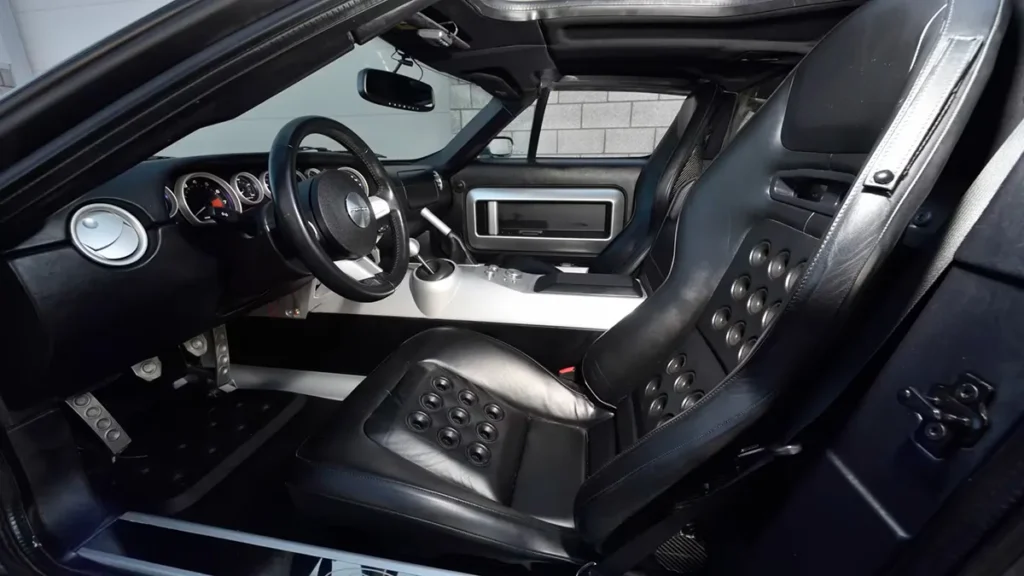The Legendary Ford GT: A First Look
By fusing American power with state-of-the-art technology, the Ford GT became one of the most recognizable supercars of all time. Designed to pay homage to the iconic Ford GT40, which ruled Le Mans in the 1960s, the Ford GT has progressed through several generations, with each new model improving upon the previous one in terms of both performance and aesthetics. Collectors and car lovers have a soft spot for the first-generation Ford GT prototypes.
A Racing Heritage That Grew into the Ford GT Prototype
The desire for Ford to compete on a global level with the best car manufacturers is where the concept for the Ford GT prototype first emerged. It was a watershed moment when the GT40 won Le Mans in 1966, demonstrating that American engineering could hold its own internationally. In 2004, Ford unveiled the first-generation GT to celebrate this victory; it continued the design philosophy of its forerunner while adding cutting-edge features.
Where Tradition and Innovation Intersect: Prototyping
Prototypes of the first-generation Ford GT weren’t just ideas; they served as the basis for the improvements that would eventually go into the final version. The engineers painstakingly built these prototypes with the goal of finding the sweet spot between handling, power, and aerodynamics. Some of the prototypes were given extreme testing on racetracks, while others were used as models for future designs.

Characteristics Distinct to the First-Generation Ford GT Model
Unparalleled Technical and Design
Proof of Ford’s dedication to design and engineering excellence is the first-generation GT prototype. The lightweight materials used to create the car’s aerodynamic body maximize its speed and agility. A six-speed manual transmission mated with a 5.4-liter V8 engine positioned in the middle provided drivers with an unmatched driving experience, capable of delivering 550 horsepower.
Uniqueness and Scarcity
The prototype of the first-generation Ford GT was unique among its contemporaries because of its scarcity. These prototypes are among the rarest automobiles in the world due to the small number that were ever produced. Collectors are anxious to get their hands on a piece of automotive history, and the rarity of these vehicles has only added to their value. Fans swoon over prototypes because of their one-of-a-kind characteristics, which might range from minor design tweaks to experimental technologies.
Potential for Investment and Market Value
The Automobile Industry’s Crown Jewel
The original Ford GT prototype from the first generation is more than simply a vehicle; it’s an investment. One of the most sought-after assets in the collector automobile market, these prototypes have seen their value rise substantially over the years. Prices for these rare vehicles can go into the millions at auctions where they are up for grabs. These prototypes will always be sought after by serious collectors because to their historical importance, rarity, and performance.
Value-Creating Elements
The first-generation Ford GT prototype’s high market value is due to several factors:
Having served as the basis for one of the most lauded American supercars, these prototypes are historically significant.
Collectors pay a premium for these due to their rarity, as only a few numbers were ever produced.
At auction, a well-preserved prototype with a clear history will command a premium.
Cultural Impact: Ford GT fans will always be interested in these early models because of the car’s enduring popularity.
The Preservation and Maintenance of the First-Generation Ford GT Prototype
It is an honor to own a prototype of the first-generation Ford GT, but with that privilege comes the duty to keep it in pristine condition. Keeping these cars in perfect condition is essential because of how rare they are. In order to keep the car in pristine condition, it must undergo routine mechanical inspections, be stored with extreme care, and have all of its original parts preserved. For the sake of keeping their prototypes in showroom shape, many owners want to show them off in climate-controlled spaces.
The Function of Private Sales and Auctions
The main place to go if you want to buy a prototype of the first-generation Ford GT is an auction. Bidders from all over the globe flock to major auction houses to buy these vehicles. Collectors frequently engage in direct negotiations to acquire these unique goods through private transactions, which also play a substantial role. To acquire one of these prototypes, one must be knowledgeable about the market dynamics and keep up with impending auctions.

An Indefinite Dedication to the Ford GT Prototype’s Future and Its Legacy
The first-generation Ford GT prototype has a bright future ahead of it, and its value is likely to continue to appreciate. These cars will only become more rare with time, further elevating them to the level of blue-chip collectibles. Interest in these prototypes is likely to stay high as long as the Ford GT is around and new variants are introduced.
In summary
More than simply an automobile, the first-generation Ford GT prototype represents the engineering excellence of the United States and is an important historical artifact. Collectors covet it for its historical significance, exceptional performance, and extreme rarity. These prototypes will remain one of the most significant vehicles in American motor history as their worth and appeal continue to rise over time.








